The timeless appeal of Biblical foods is evident as many of these ancient staples continue to grace our dining tables today. With profound historical and cultural significance, these foods not only connect us to our past but also enrich our culinary experiences. This journey through 21 Biblical foods uncovers the rich tapestry of flavors and stories that have transcended centuries.
Olives
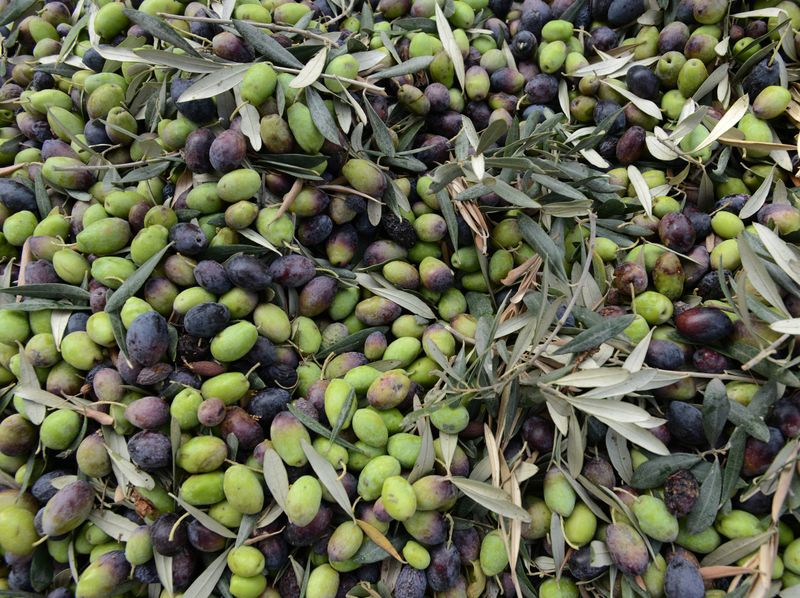
Olives, with their rich, oily texture and slightly bitter taste, have been cultivated for thousands of years. In the Bible, they symbolize peace and abundance. The olive tree, known for its resilience and longevity, thrives in Mediterranean climates.
These fruits are often pressed to create olive oil, a vital ingredient in Biblical times. Today, olives add depth to dishes like salads and tapenades. Did you know? The Mount of Olives is a famous hill in Jerusalem, known for its ancient olive groves and religious significance.
Olives remain a staple in many households, offering both flavor and history.
Pomegranates
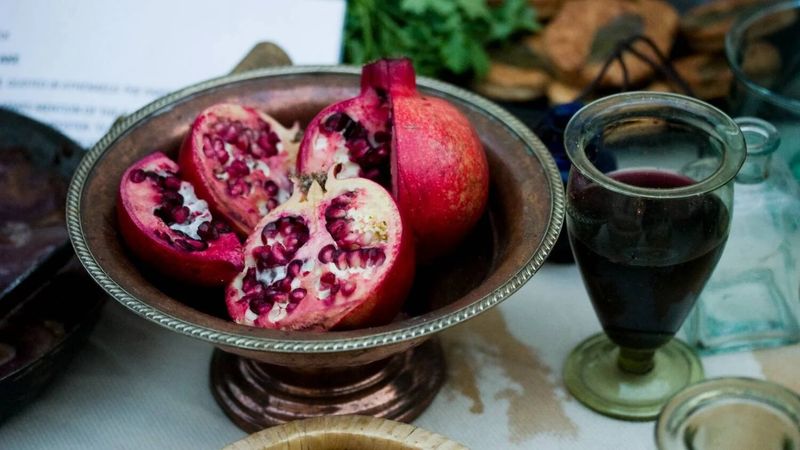
Pomegranates, with their jewel-like seeds and tart flavor, were highly prized in Biblical times. Featured prominently in religious texts, they symbolize fertility and prosperity.
Pomegranates are often mentioned in descriptions of the Promised Land, highlighting their importance in ancient diets. Today, they are celebrated for their health benefits, including antioxidants.
The intricate beauty of a pomegranate is unmatched. Did you know? Some traditions believe the fruit in the Garden of Eden was a pomegranate, not an apple. Their enduring allure continues to captivate taste buds worldwide.
Figs
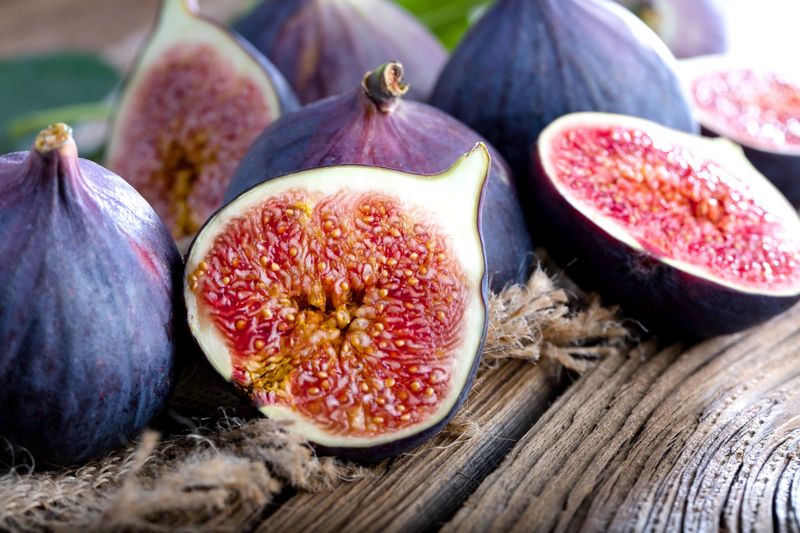
Figs, sweet and chewy, were a popular treat in ancient times. In the Bible, they represent prosperity and stability. The fig tree, known for its broad leaves, provided shade and nourishment.
Often dried and stored, figs were a vital food source in arid regions. Today, they are a beloved snack, versatile in both sweet and savory dishes. Did you know? Figs were one of the first plants cultivated by humans, making them a true testament to agricultural history.
Their timeless appeal continues to be cherished in modern cuisine.
Dates
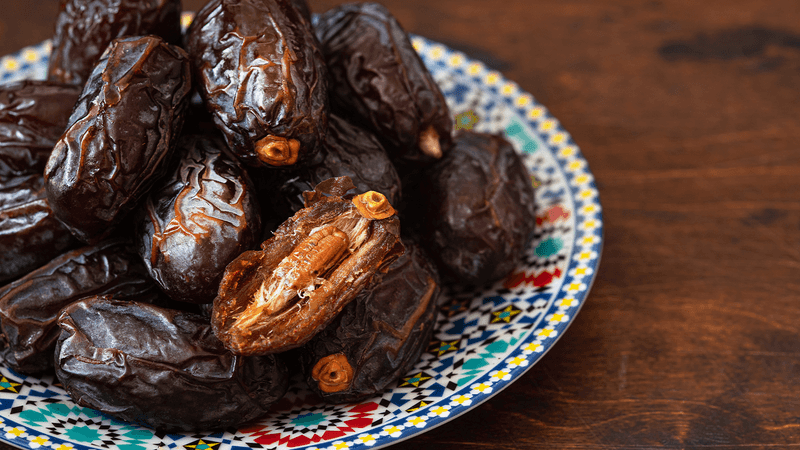
Dates, with their natural sweetness and rich texture, have sustained people for millennia. In the Bible, they are a symbol of fertility and are often associated with abundance.
Date palms, iconic in Middle Eastern landscapes, are known for their resilience and beauty. Today, dates are a versatile ingredient in desserts and energy bars.
Their rich, caramel-like flavor is unforgettable. Did you know? The ancient town of Jericho, one of the oldest inhabited cities, was renowned for its date production. Dates remain a cherished fruit, bridging ancient and modern culinary traditions.
Barley
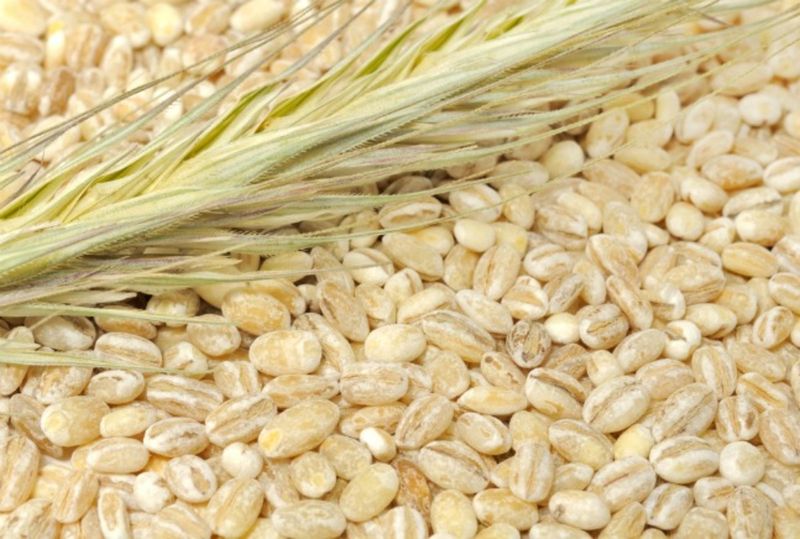
Barley, one of the oldest cultivated grains, played a crucial role in Biblical diets as a staple food. It symbolizes sustenance and resilience, often mentioned in scriptures alongside wheat.
Used in bread-making and as animal feed, barley has a nutty flavor and chewy texture. Today, it is celebrated for its health benefits, including fiber and vitamins. Did you know? Barley was used in ancient offerings, symbolizing gratitude and devotion.
Its enduring presence in modern cuisine showcases its versatility and nutritional value.
Wheat

Wheat, the cornerstone of ancient agriculture, is frequently mentioned in the Bible. It symbolizes nourishment and prosperity. Wheat fields, golden and expansive, are a testament to the grain’s importance in sustaining communities.
Ground into flour, wheat was essential for bread-making, a daily staple. Today, its versatility continues to be celebrated in countless dishes. Did you know? The word “Bethlehem” means “house of bread,” highlighting wheat’s cultural significance. Wheat’s legacy as a fundamental food source endures, bridging ancient and modern diets.
Grapes
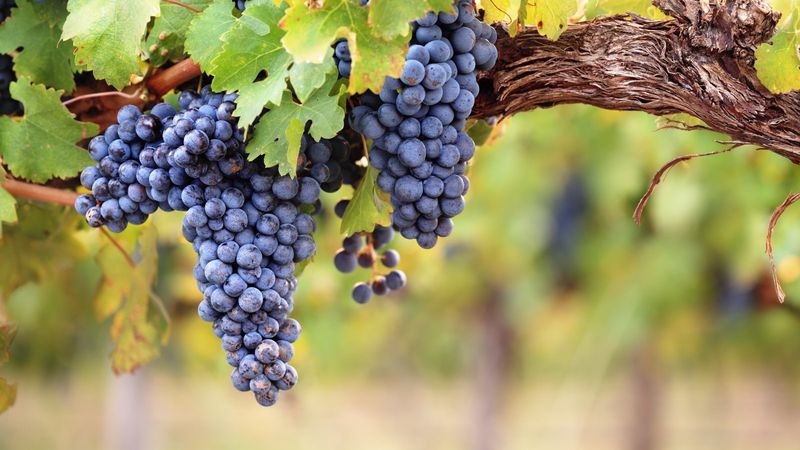
Grapes, with their juicy burst of flavor, have been a cherished fruit since Biblical times. They symbolize joy and abundance in religious texts. Vineyards, often mentioned in parables, were central to ancient economies.
Grapes are pressed to make wine, a staple in many Biblical stories. Today, they are enjoyed fresh, dried as raisins, or fermented. Did you know? The practice of viticulture, or grape cultivation, dates back thousands of years. Grapes’ versatility and symbolic richness continue to make them a beloved fruit worldwide.
Honey

Honey, golden and sweet, is often referred to as the “nectar of the gods.” In the Bible, it symbolizes abundance and delight, with “land of milk and honey” highlighting prosperity.
Harvested from wild bees, honey was a treasured sweetener and medicinal remedy. Today, its versatility spans culinary and health applications. Did you know? Honey never spoils; jars thousands of years old have been found, still edible. This enduring quality adds to its charm, making honey a beloved treat throughout history.
Lentils

Lentils, with their earthy flavor and hearty texture, have been a staple since ancient times. In the Bible, they symbolize sustenance and humility. Lentils are featured in the story of Esau selling his birthright for a lentil stew.
Rich in protein and fiber, they remain a vital food source today. Lentils are versatile, used in soups, stews, and salads, cherished for their nutritional benefits.
Did you know? Lentils are one of the earliest domesticated crops, dating back to the Neolithic era. Their enduring appeal in modern diets is a testament to their adaptability.
Almonds

Almonds, with their delicate crunch and mild flavor, have been cherished since Biblical times. In the Bible, they symbolize watchfulness and resurrection, as seen in the story of Aaron’s rod blossoming.
Almond trees, with their beautiful blooms, signal the arrival of spring. Today, almonds are a popular snack, valued for their health benefits, including protein and healthy fats. Did you know? Almonds are technically seeds, not nuts, with a rich history in culinary traditions.
Their timeless appeal and versatility continue to charm palates worldwide.
Cucumbers

Cucumbers, crisp and refreshing, have been cultivated since ancient Egypt and mentioned in the Bible. They symbolize nourishment and simplicity.
Their cool, hydrating nature made them a popular choice in hot climates. Today, cucumbers are enjoyed in salads and pickles, appreciated for their light, crisp texture. Did you know? The Israelites longed for cucumbers during their exodus from Egypt, highlighting their significance in ancient diets.
Their enduring popularity is a testament to their refreshing qualities and culinary versatility.
Garlic
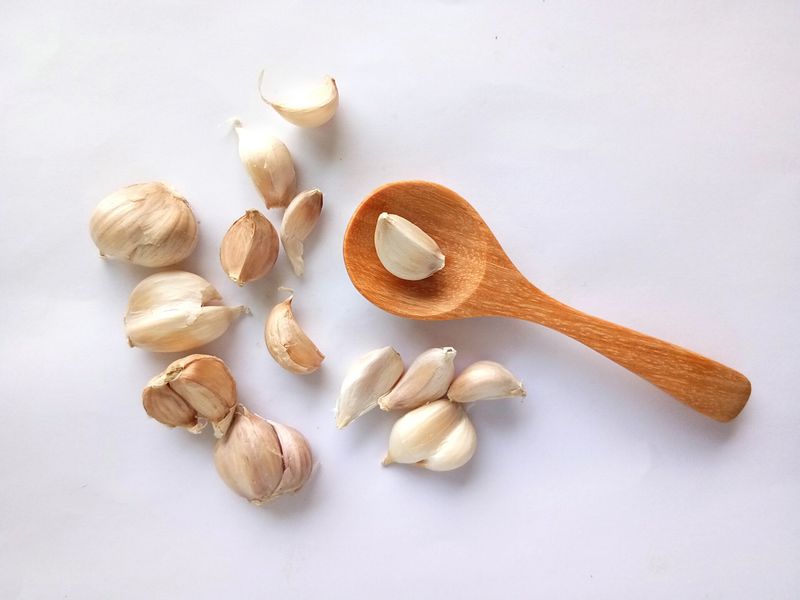
Garlic, with its pungent aroma and robust flavor, has been a culinary staple since ancient times. In the Bible, it symbolizes strength and vitality, often listed among the foods craved by the Israelites.
Garlic’s bold taste enhances a variety of dishes, from sauces to soups. Today, it is celebrated for its health benefits, including boosting immunity. Did you know? Garlic has been used both as food and medicine for over 7,000 years, prized for its powerful properties.
Its presence in modern kitchens speaks to its enduring allure.
Leeks

Leeks, with their mild onion-like flavor, have been cherished since Biblical times. They symbolize nourishment and sustenance. The Israelites, during their exodus, longed for the leeks of Egypt, highlighting their place in ancient diets.
Leeks are versatile, enhancing soups, stews, and quiches. Did you know? The leek is a national symbol of Wales, often worn on St. David’s Day.
Their subtle taste and historical significance continue to make leeks a beloved ingredient in cuisines worldwide, celebrated for their culinary and cultural contributions.
Fish

Fish, a staple protein source, features prominently in Biblical narratives. They symbolize life and sustenance, central to stories like the miraculous feeding of the 5,000.
The Sea of Galilee, teeming with fish, supported the livelihoods of many. Today, fish are enjoyed grilled, baked, or fried, prized for their health benefits.
Did you know? Early Christians used the ichthys, or fish symbol, as a secret sign of their faith. The enduring presence of fish in diets worldwide reflects their nutritional value and historical significance.
Mustard Seed

Mustard seeds, small yet potent, hold significant symbolism in the Bible. They represent faith and growth, highlighted in the parable of the mustard seed.
Despite their size, these seeds grow into large plants, offering spice and depth to dishes. Today, mustard seeds are used in condiments and seasonings.
Did you know? The mustard plant’s ability to thrive in diverse conditions underscores its symbolic meaning. Mustard seeds’ cultural and culinary relevance continues to enrich modern palates, bridging ancient teachings with contemporary flavors.
Coriander
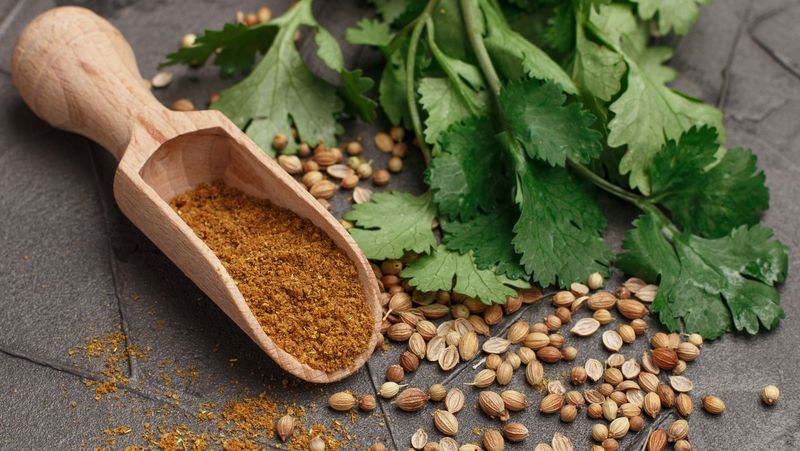
Coriander, with its citrusy aroma and distinctive taste, has been prized since Biblical times. It symbolizes sustenance and bounty. Mentioned in the Bible as resembling manna, coriander seeds were a valued spice.
Today, both the leaves and seeds are used, enhancing a variety of cuisines worldwide. Did you know? Coriander’s dual use as herb and spice makes it unique, offering a harmonious blend of flavors.
Its enduring presence in global kitchens underscores its versatility and historical importance.
Vinegar

Vinegar, tangy and versatile, has been used since ancient times. In the Bible, it symbolizes bitterness and sacrifice, notably in the crucifixion narrative where Jesus was offered vinegar.
Used as a preservative and condiment, vinegar adds depth to dishes. Today, it is appreciated for its culinary and health applications. Did you know? Vinegar’s preservative qualities made it vital in ancient food storage.
Its multifaceted uses and historical roots make vinegar an indispensable ingredient, bridging past traditions with modern culinary practices.
Watermelon

Watermelons, with their refreshing sweetness, were enjoyed in ancient Egypt and mentioned in the Bible. They symbolize refreshment and abundance.
Known for their hydrating properties, watermelons were a favored treat in hot climates. Today, they are a staple at summer gatherings, loved for their juicy texture.
Did you know? Watermelons have been cultivated for over 5,000 years, originating in Africa. Their enduring popularity highlights their refreshing qualities and historical significance.
Goat’s Milk

Goat’s milk, nourishing and versatile, has been a staple since Biblical times. It symbolizes sustenance and simplicity, often mentioned in pastoral settings.
Valued for its digestibility and nutritional benefits, goat’s milk is used in cheeses and yogurts. Did you know? Goat’s milk was considered a luxury in ancient diets, cherished for its creamy texture.
Its timeless appeal continues in modern culinary traditions, celebrated for its rich flavor and health benefits, connecting past and present dietary practices.
Quail

Quails, small and plump, were provided by God as sustenance for the Israelites during their desert journey. They symbolize providence and survival in the Bible.
Quail meat, tender and flavorful, was a welcome relief in harsh conditions. Today, quails are enjoyed as a gourmet delicacy, appreciated for their delicate taste. Did you know? Quails have been bred for both their meat and eggs, favored in various cuisines.
Their role in Biblical narratives underscores their enduring importance in both historical and modern culinary contexts.
Herbs and Spices

Herbs and spices, aromatic and flavorful, have always been integral to culinary traditions. In the Bible, they symbolize healing and preservation.
Used in cooking and medicine, herbs like thyme and spices like cinnamon enriched ancient diets. Today, they continue to be cherished for their flavor and health benefits.
Did you know? The wise men brought spices as gifts, highlighting their value. The timeless appeal of herbs and spices bridges ancient wisdom with contemporary culinary innovation.
Leave a comment